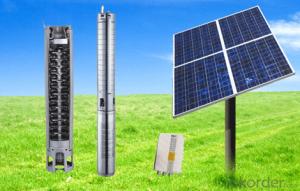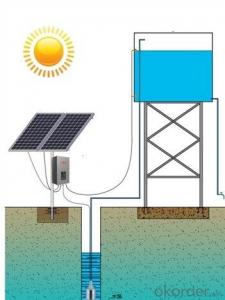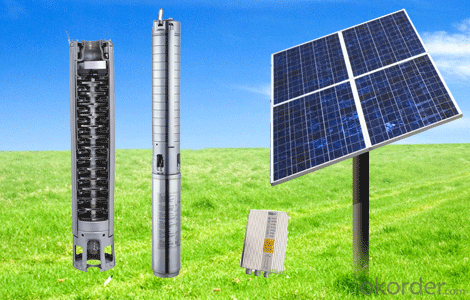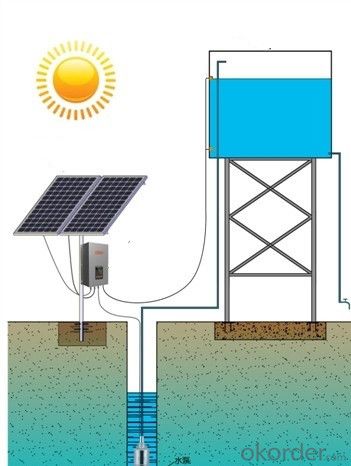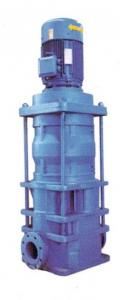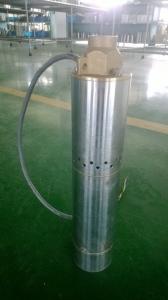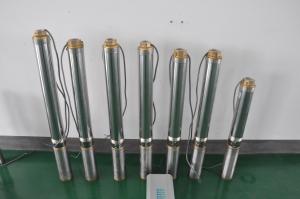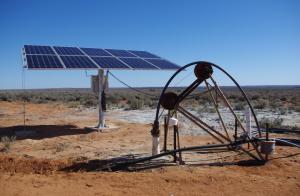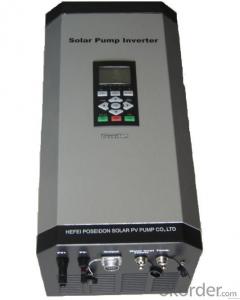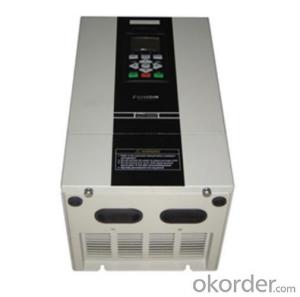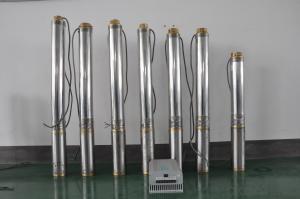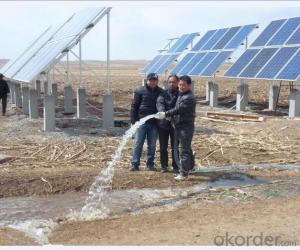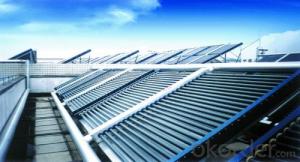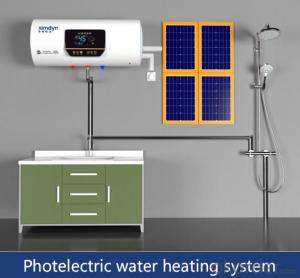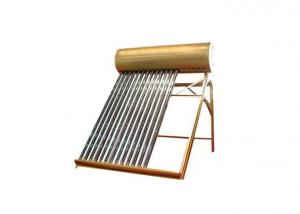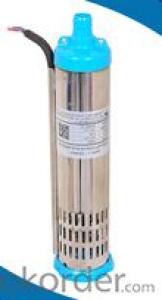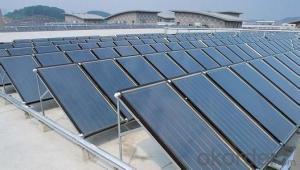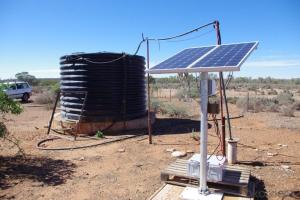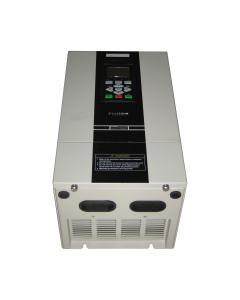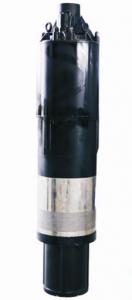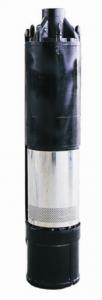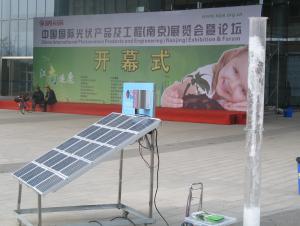Solar Pump Factory Homemade Solar Water Heater
- Loading Port:
- Shanghai
- Payment Terms:
- TT OR LC
- Min Order Qty:
- 1 set
- Supply Capability:
- 1000 set/month
OKorder Service Pledge
OKorder Financial Service
You Might Also Like
Solar Pump Price Homemade Solar Water Heater
DC solar water pumping system consists of the motor, pump, controller, solar array and some other accessories, such as water level sensor, float switch, etc. Considered that storing water is more efficient than storing electricity, the system is designed to directly drive the pump without battery which can reduce the construction and operating cost and routine maintenance effectively.The PV array consists of multiple solar panels connected in series/parallel, which can supply the whole system as power source by converting the absorbed solar radiation energy to the electrical energy. The pump driven by a brushless DC permanent magnet motor draws water from deep-well or river. The pumped water is then fed into reservoir or water tank, or connected to the irrigation system or fountain system directly.
Advanced Technology
Applications Innovation
The efficiency of DC brushless permanent magnet motor has been increased up to 25% in comparison with traditional asynchronous motor.
Technology Innovation
Stator and rotor are sealed by environment friendly casting resin.Motor insulation resistance can be hold higher than 300MΩfor more than 10 years, which consumedly increased the security and reliability of the submersible motor.
Structure Innovation
Casting resign technology processed stator and rotor as well as the water lubricated bearing make the submersible pump environment friendly.
Feature
High Efficiency & High Reliability
DC Brushless Permanent Magnet Motor
Minimum Maintenance, long Service Life
Environment Friendly Materials, Lubricated Without Oil
Application
Village or Family Water Supply
Animal Drinking Water & Livestock Watering
Garden/Courtyard Irrigation
Swimming Pool
Water Supply for Bivouac or Camping Car
Water Supply for Remote Area
Automatic Control
Operate Automatically, No Need Watching
Maximum Power Point Tracking (MPPT)
Dry-run Protection
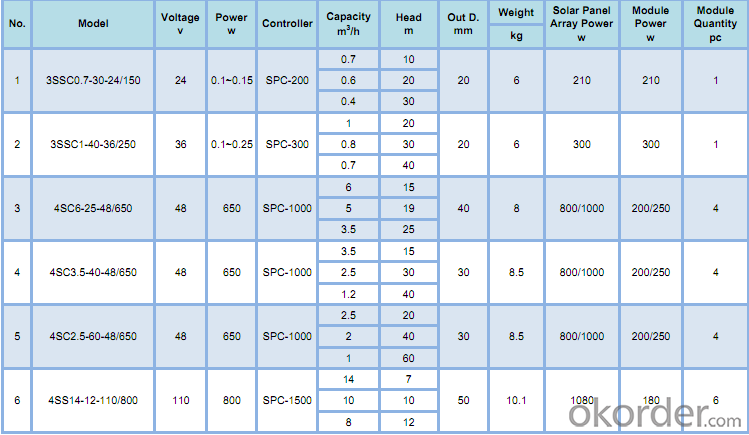
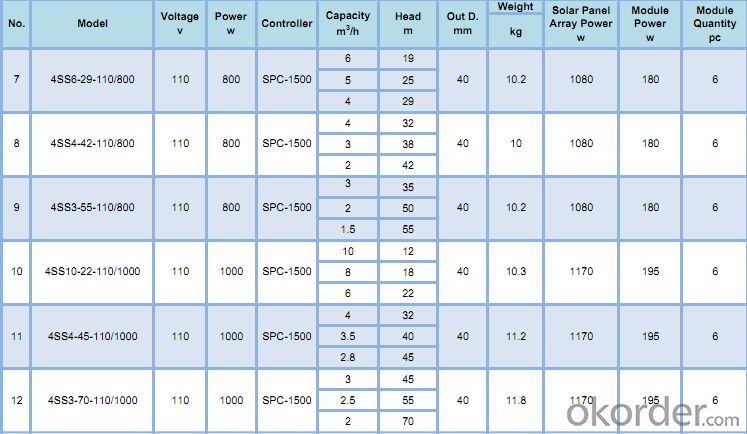
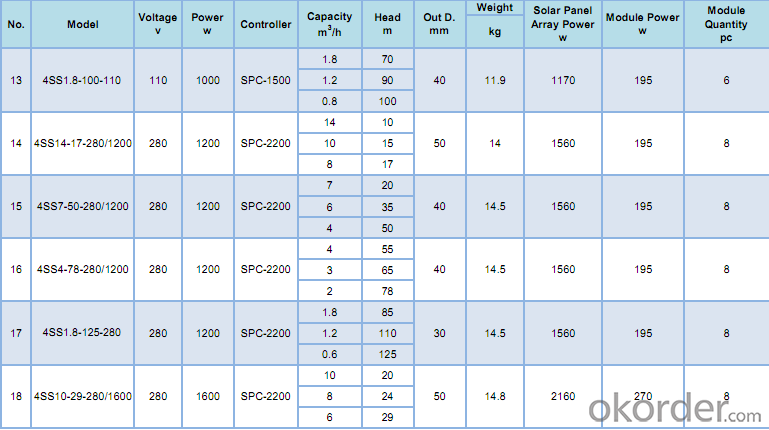
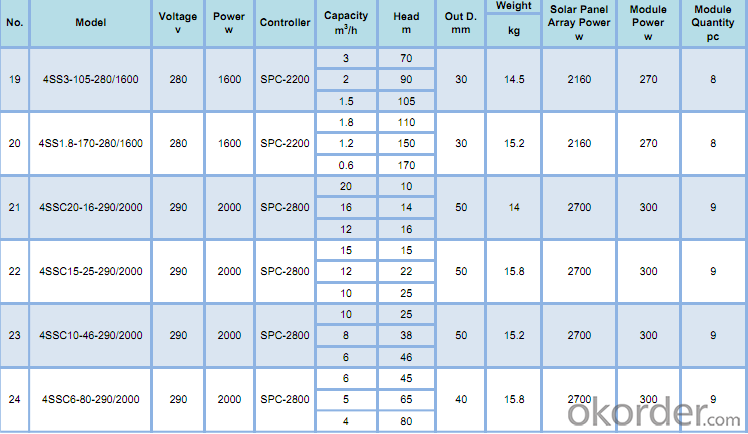
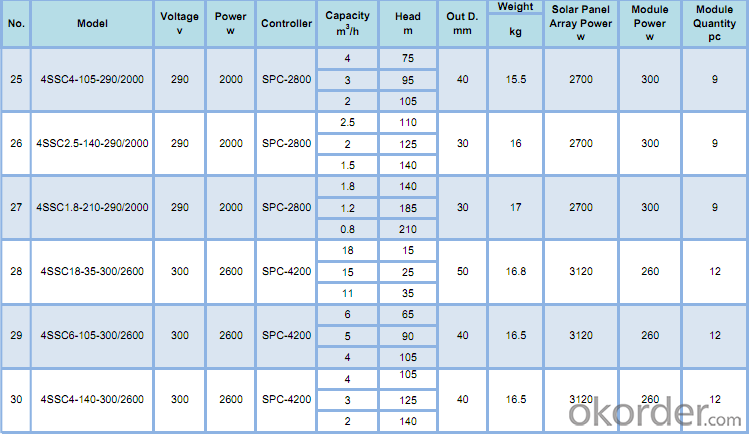
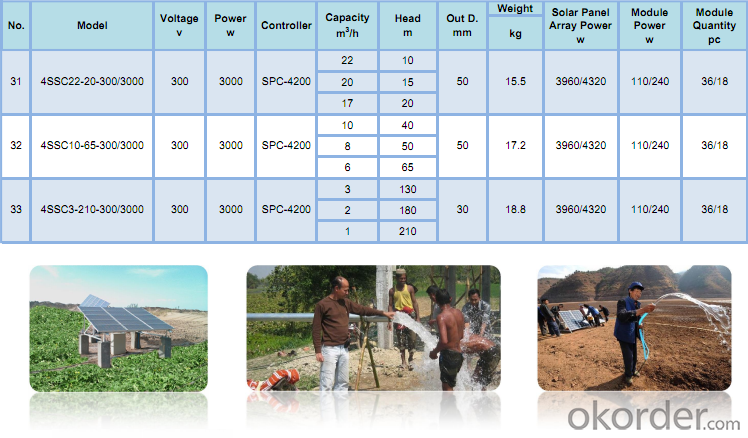
- Q: Can a solar pump be used for hydroponics?
- Yes, a solar pump can be used for hydroponics. Solar pumps are a sustainable and efficient option for providing water circulation and nutrient delivery in hydroponic systems. They can effectively power the required irrigation and nutrient distribution, reducing the reliance on traditional electricity sources and operating costs.
- Q: Can solar pumps be used for water supply in mining or quarrying operations?
- Yes, solar pumps can be used for water supply in mining or quarrying operations. Solar pumps are a sustainable and environmentally-friendly alternative to traditional diesel or electric pumps. They can provide a reliable source of water for various mining and quarrying activities, including dust suppression, ore processing, and general site maintenance. Additionally, solar pumps offer cost savings in the long run as they rely on renewable energy and require minimal maintenance.
- Q: Can a solar pump be used for fish farming or aquaculture?
- Yes, a solar pump can be used for fish farming or aquaculture. Solar pumps are a sustainable and cost-effective option for providing water circulation, aeration, and filtration in fish ponds or aquaculture systems. They can help maintain water quality, oxygen levels, and overall health of the fish, while reducing dependence on grid electricity or conventional pumping systems.
- Q: Can a solar pump be used in areas with extreme temperatures?
- Yes, solar pumps can be used in areas with extreme temperatures. However, the performance and efficiency of the pump may be affected by the temperature extremes. It is important to select a solar pump that is specifically designed to withstand and operate in extreme temperatures to ensure reliable and efficient operation.
- Q: Can a solar pump be used in areas with limited access to fuel for traditional pumps?
- Yes, a solar pump can be an effective solution for areas with limited access to fuel for traditional pumps. Solar pumps operate solely on solar energy, eliminating the need for fuel or electricity. This makes them ideal for remote locations or areas with unreliable fuel supply. By harnessing the power of the sun, solar pumps provide a sustainable and cost-effective alternative, ensuring access to water even in fuel-constrained areas.
- Q: Can a solar pump be used for water circulation in a pond or lake?
- Certainly! A solar pump is capable of facilitating water circulation in both ponds and lakes. These pumps are specifically designed to function using solar energy, rendering them an optimal and environmentally friendly choice for outdoor water circulation. Typically, these pumps utilize solar panels to convert sunlight into electricity, which subsequently powers the pump and enables the circulation of water. Maintaining a healthy ecosystem in ponds and lakes necessitates water circulation as it fosters the oxygenation of water, prevents stagnation, and curbs the growth of detrimental organisms such as algae. The installation of solar pumps is effortless and demands minimum upkeep, thereby providing a convenient and cost-effective solution for water circulation in ponds and lakes.
- Q: What is the impact of a solar pump on energy independence?
- A solar pump has a significant impact on energy independence as it reduces reliance on traditional energy sources and fossil fuels. By harnessing solar power, which is a renewable and abundant energy source, a solar pump allows for the extraction and distribution of water without the need for grid electricity or diesel generators. This not only reduces energy costs but also provides a sustainable and reliable water supply, promoting self-sufficiency and reducing dependence on external energy sources. Overall, a solar pump contributes to achieving energy independence by utilizing clean and renewable energy for water pumping needs.
- Q: Can a solar pump be remotely monitored or controlled?
- A solar pump can indeed be monitored and controlled from a remote location. Thanks to technological advancements, many solar pumps now come equipped with systems that allow for remote monitoring and control. These systems typically use wireless communication technologies like GSM, GPRS, or satellite communication to enable remote access to the pump's performance data and control functions. With remote monitoring, users can keep track of the pump's operation, performance, and energy production in real-time from a central location. This information includes data on water flow rates, power output, system efficiency, and battery charge levels. It helps identify any issues or inefficiencies promptly, allowing for timely maintenance or adjustments to optimize the pump's performance. Moreover, remote control capabilities enable users to remotely operate and control the pump's functions. This includes actions like starting or stopping the pump, adjusting the speed or flow rate, changing the operational mode, or even toggling the pump's power supply on or off. These control features provide convenience and flexibility, especially in situations where physically accessing the pump may be challenging or time-consuming. In summary, remote monitoring and control of solar pumps offer significant advantages in terms of efficiency, convenience, and cost savings. It allows for proactive maintenance, efficient energy management, and the ability to promptly respond to any issues or changes in operating conditions.
- Q: How does a solar pump handle water source contamination from nuclear power plants?
- A solar pump does not directly handle water source contamination from nuclear power plants. Its primary function is to harness solar energy to pump water from a source, such as a well or river, and does not have the ability to address or mitigate contamination caused by nuclear power plants. Handling water source contamination from nuclear power plants requires specialized systems and processes designed to treat and purify the water to remove any radioactive substances or pollutants.
- Q: Is it possible to retrofit an existing pump system with solar power?
- Yes, it is possible to retrofit an existing pump system with solar power. Retrofitting involves integrating solar panels and a solar power converter into the existing system. The solar panels would be installed in a location where they receive maximum sunlight exposure, typically on the roof or nearby area. The solar power converter is then connected to the existing pump system, allowing it to draw power from the solar panels. This setup enables the pump system to operate independently of the electrical grid, reducing or even eliminating the need for conventional electricity. Retrofitting with solar power offers several advantages, including lower operating costs, reduced carbon emissions, and increased energy independence. However, it is important to consider the specific requirements of the pump system and ensure that the solar power capacity is sufficient to meet the system's needs.
Send your message to us
Solar Pump Factory Homemade Solar Water Heater
- Loading Port:
- Shanghai
- Payment Terms:
- TT OR LC
- Min Order Qty:
- 1 set
- Supply Capability:
- 1000 set/month
OKorder Service Pledge
OKorder Financial Service
Similar products
Hot products
Hot Searches
Related keywords
